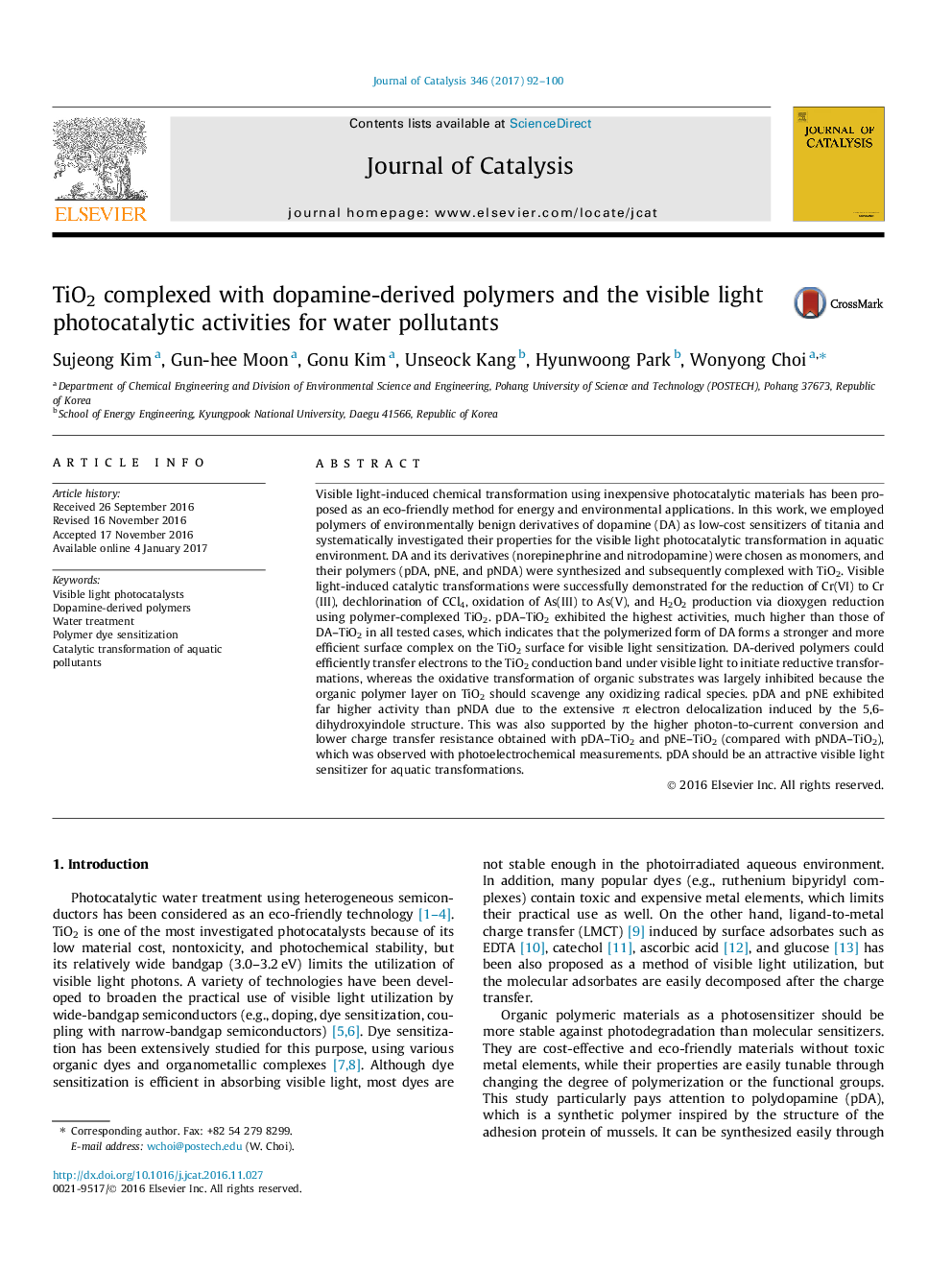| Article ID | Journal | Published Year | Pages | File Type |
|---|---|---|---|---|
| 6455705 | Journal of Catalysis | 2017 | 9 Pages |
â¢Dopamine-derived-polymer-coated TiO2 is synthesized through a one-step self-oxidation method.â¢The structure of polymers affects the light absorption and consequently the visible-light-induced photocatalytic activity.â¢Visible light sensitization through dopamine-derived polymers is highly effective for reductive conversion.
Visible light-induced chemical transformation using inexpensive photocatalytic materials has been proposed as an eco-friendly method for energy and environmental applications. In this work, we employed polymers of environmentally benign derivatives of dopamine (DA) as low-cost sensitizers of titania and systematically investigated their properties for the visible light photocatalytic transformation in aquatic environment. DA and its derivatives (norepinephrine and nitrodopamine) were chosen as monomers, and their polymers (pDA, pNE, and pNDA) were synthesized and subsequently complexed with TiO2. Visible light-induced catalytic transformations were successfully demonstrated for the reduction of Cr(VI) to Cr(III), dechlorination of CCl4, oxidation of As(III) to As(V), and H2O2 production via dioxygen reduction using polymer-complexed TiO2. pDA-TiO2 exhibited the highest activities, much higher than those of DA-TiO2 in all tested cases, which indicates that the polymerized form of DA forms a stronger and more efficient surface complex on the TiO2 surface for visible light sensitization. DA-derived polymers could efficiently transfer electrons to the TiO2 conduction band under visible light to initiate reductive transformations, whereas the oxidative transformation of organic substrates was largely inhibited because the organic polymer layer on TiO2 should scavenge any oxidizing radical species. pDA and pNE exhibited far higher activity than pNDA due to the extensive Ï electron delocalization induced by the 5,6-dihydroxyindole structure. This was also supported by the higher photon-to-current conversion and lower charge transfer resistance obtained with pDA-TiO2 and pNE-TiO2 (compared with pNDA-TiO2), which was observed with photoelectrochemical measurements. pDA should be an attractive visible light sensitizer for aquatic transformations.
Graphical abstractDownload high-res image (99KB)Download full-size image
